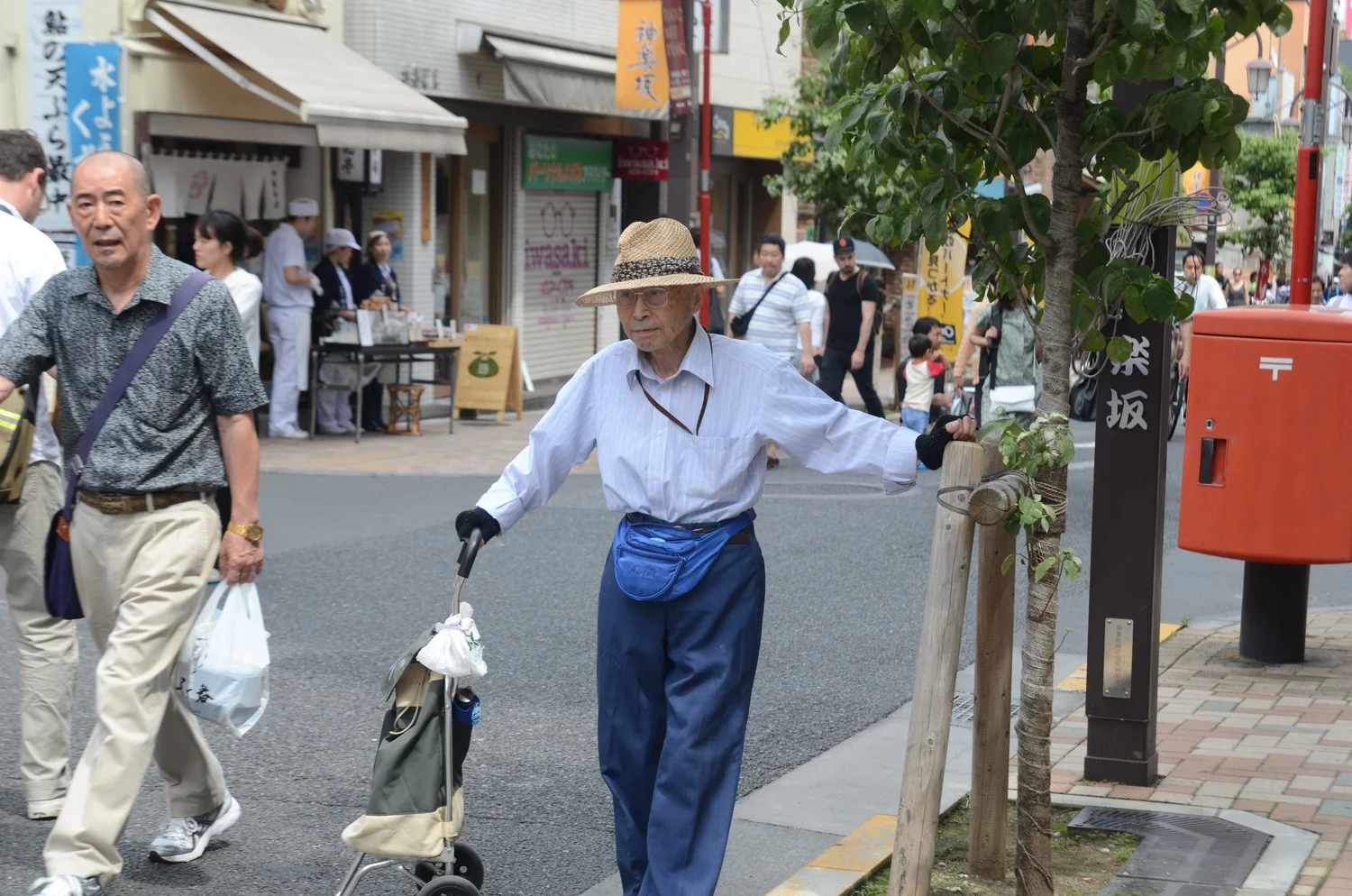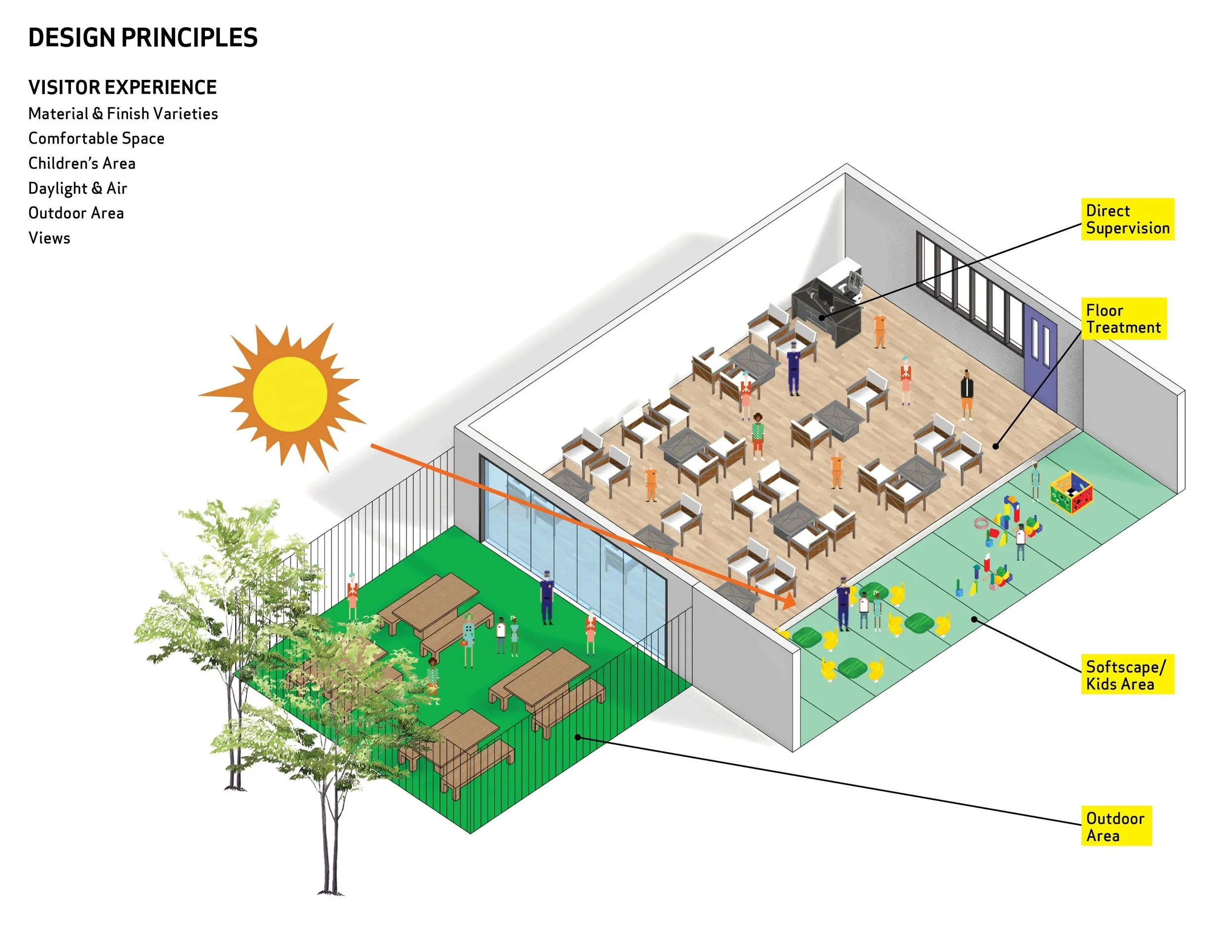Street Design for Senior Safety
By Matt Garcia
When was the last time you worried about having enough time to cross the street at a crosswalk? Maybe you started a little jog to get across in time or made your decision based on the approaching traffic that you could see. Now imagine if you could only walk a third of your normal speed and didn’t have all of your peripheral vision to tell you if cars were coming. Maybe with the entire cycle length you still weren’t totally sure you could make it across in time. Maybe one more fall could mean significant hospital time or worse. These are real considerations that many seniors make when navigating streetscapes.
The U.S. Census Bureau says that “residents age 65 and over grew from 35.0 million in 2000, to 49.2 million in 2016, accounting for 12.4 percent and 15.2 percent of the total population, respectively.” (1) The senior population is growing. And not just in the United States. Populations around the world now live longer, while fertility rates have fallen. (2) Overall, a larger proportion of the world is becoming older.
Urban settings, in many ways, offer a good environment for aging populations. Denser development means shorter distances to travel, and this is especially important when seniors are no longer able to drive. Urban places tend to have better transit networks, allowing more independent travel and easy access to co-located social, health, and other services. And overall, people are located in urban environments, offering more potential social connections to combat loneliness and social isolation that become more common as seniors age. Urban environments offer more at a time when many aspects of daily life become more difficult. But if seniors continue to move to cities en masse, we must work to ensure that the environment in which they find themselves meets their needs, especially with regard to safety. The benefits of urban settings also come with a denser network of streets and street users. At street level, the unique needs of seniors mean that dangers surrounding the intersection of vehicles and pedestrians are often amplified.
Currently, we try to address street safety concerns mainly by alerting the senses at key boundaries and at key moments in time. Curbs provide a natural tactile difference to distinguish street space available to vehicles and space available to pedestrians. Cars honk to alert others that they are in the vehicle’s path. Visual cues like fences and street markings communicate where public space transitions to private space and where pedestrians may cross the same space as vehicles.
When investigating street design for seniors, however, one of the bigger considerations with regard to these treatments is that seniors tend to have weakened senses. To address weakened senses, we tend to increase the redundancy of a single alert across multiple senses. For instance, if we have visual cues like striping on the street outlining the crosswalk and a white pedestrian light saying pedestrians are safe to start crossing, we may add audio beeps that change based on where the pedestrian is in the crossing, guiding them across the street. Crosswalks also may have raised bumps at the boundary between the sidewalk and the pavement to add a tactile component on top of the visual and audio cues. In some places like Tokyo, Japan, tactile features like guide strips guide pedestrians along entire paths (e.g. from the subway station to the main sidewalk). These sensory alerts layer on top of one another to hopefully capture the attention of all street users and keep them safe.
Other street design features attempt to give pedestrians a leg up on the vehicle traffic competition and as a result keep users safe. These features can help those seniors who may move slower than they used to. Curb extensions and median islands shorten crossing distances and provide a pedestrian space in the middle of the street to feel safe stopping if you can’t make it across the street all in one go. Leading pedestrian intervals (LPIs) give pedestrians a head start to cross the street before vehicle traffic in the same direction is allowed to go. Even planting trees along a route can help reduce vehicle speeds along a corridor by narrowing a driver’s visual field and causing them to drive more cautiously, creating a lower speed environment. Lower speeds mean better reaction times and less serious injuries when collisions do occur.
Curb extensions shorten crossing distances (Photo: NACTO)
So-called “Shared Spaces” that blur the lines between transportation modes are also gaining traction with regard to street safety. Although it may seem counter-intuitive, removing markers like street signage, grade differences, and street lines causes all users of the road to be hyper-aware when moving through a space. Pairing this with slower speed limits and other traffic calming treatments like planted trees creates a space that allows for slower but continuous traffic flow and a higher level of safety.
Increasing comfort for seniors is another important piece that is often overlooked amid the vehicle-pedestrian safety concerns. Many seniors do not have the energy that younger adults have, requiring more frequent stops along a journey. Public seating provides relief amid travel distances and provides more eyes on the street. Seniors are also more susceptible to health effects related to sun and extreme temperature exposure, so seemingly humble features like street trees and awnings can provide important benefits in high-heat areas and seasons. Covered and adequate transit shelters serve a similar function to facilitate elderly transit use. At night, pedestrian-scale lighting can improve visual awareness for seniors who often have weakened eyesight and help seniors feel safer from prowlers at night. Each of these interventions may represent the difference between making a trip and staying home for elderly users who have to navigate a complicated street system.
The proliferation of smart devices offer opportunities to improve street safety for senior populations on top of existing interventions. For example, the auditory and tactile possibilities of smartphones allow the development of apps that guide device-owners along a pathway they might not be able to see clearly or alert them to local conditions like an icy sidewalk that could pose a safety hazard. Headphones could be linked with local transit and street signal networks to alert someone audibly if the bus is coming or the traffic signal is about to turn green. As these data streams continue to grow and seniors become more comfortable with internet-connected technology, possibilities for technology-augmented streetscape experiences increase.
Furthermore, as ordinary devices and objects become more connected, we may also see elements detecting us rather than the other way around. For example, perhaps crosswalks will detect a pedestrian through her smartphone and give off an auditory warning if they are crossing when vehicles are still traveling through. Or perhaps pedestrian-scale lighting will brighten as pedestrians come near. While the merits of the individual technology features will be debated, the experience of urban environments will certainly evolve to incorporate more and more “connected” devices and systems.
While existing street design elements rely on some action by the person who may or may not be aware of a danger, in the near future, connected devices and vehicles may be able to take action themselves when confronted with incidents, (e.g. a pedestrian in danger). Connected vehicles, vehicles smart enough to communicate with one another regarding road conditions, offer the potential for better reaction times. For example, if a connected vehicle encounters a pedestrian in the street after the light has changed, it could communicate that information to other vehicles in the area, alerting drivers to a potential safety hazard in the vicinity.
Fully autonomous vehicles takes these ideas further, presenting significant implications for street design. While streets like ours today are designed to accommodate for human error, a fully autonomous vehicle ecosystem would not have to rely on interventions used in the past. For example, physical curbs may start to disappear since the boundaries of vehicle space can be defined through the technology of the autonomous vehicle rather than through the design of the street. This could open up the possibilities of street design to produce more open, shared spaces similar to roads at the turn of the 20th century.
New York City - Early 1900s (Colorized) (Photo: History in Pictures)
If autonomous vehicles fulfill their promise of drastically improved safety, perhaps other features we use to ensure safe coexistence between vehicles and pedestrians, features that have come to define the streetscape, will become obsolete. What is the purpose of a crosswalk when one can safely cross anywhere along the street? Perhaps on some corridors, traffic flow? Perhaps on others, the purpose disappears. If autonomous vehicles act as community resources, on-street parking could also drastically decline, with autonomous cars dropping one passenger off only to pick up another and stay on the road. If streets stop acting as vehicle storage (i.e. parking), this represents another dramatic shift in the design of streets, continuing to blur the lines between sidewalk and street. The promise of autonomous vehicles points to a more pedestrian-oriented and by extension senior-friendly design of future streetscapes. (Read our friends, Mike Flynn and Ben Rosenblatt’s piece on autonomous vehicles here)
While the future may hold a more connected and automated street ecosystem, those who design existing streets to keep seniors safe already know that streets that are safer for seniors are streets that are safer for everyone. Providing more time and space for vulnerable users using existing street design and traffic calming techniques can improve the urban environment for seniors dramatically, so rather than wait to see what the future may hold, we can start making streets for seniors now.
US Census Bureau. The Nation’s Older Population is Still Growing, Census Bureau Reports. 2017. https://www.census.gov/newsroom/press-releases/2017/cb17-100.html
US Department of Commerce. An Aging World: 2015. 2016. https://www.census.gov/content/dam/Census/library/publications/2016/demo/p95-16-1.pdf






